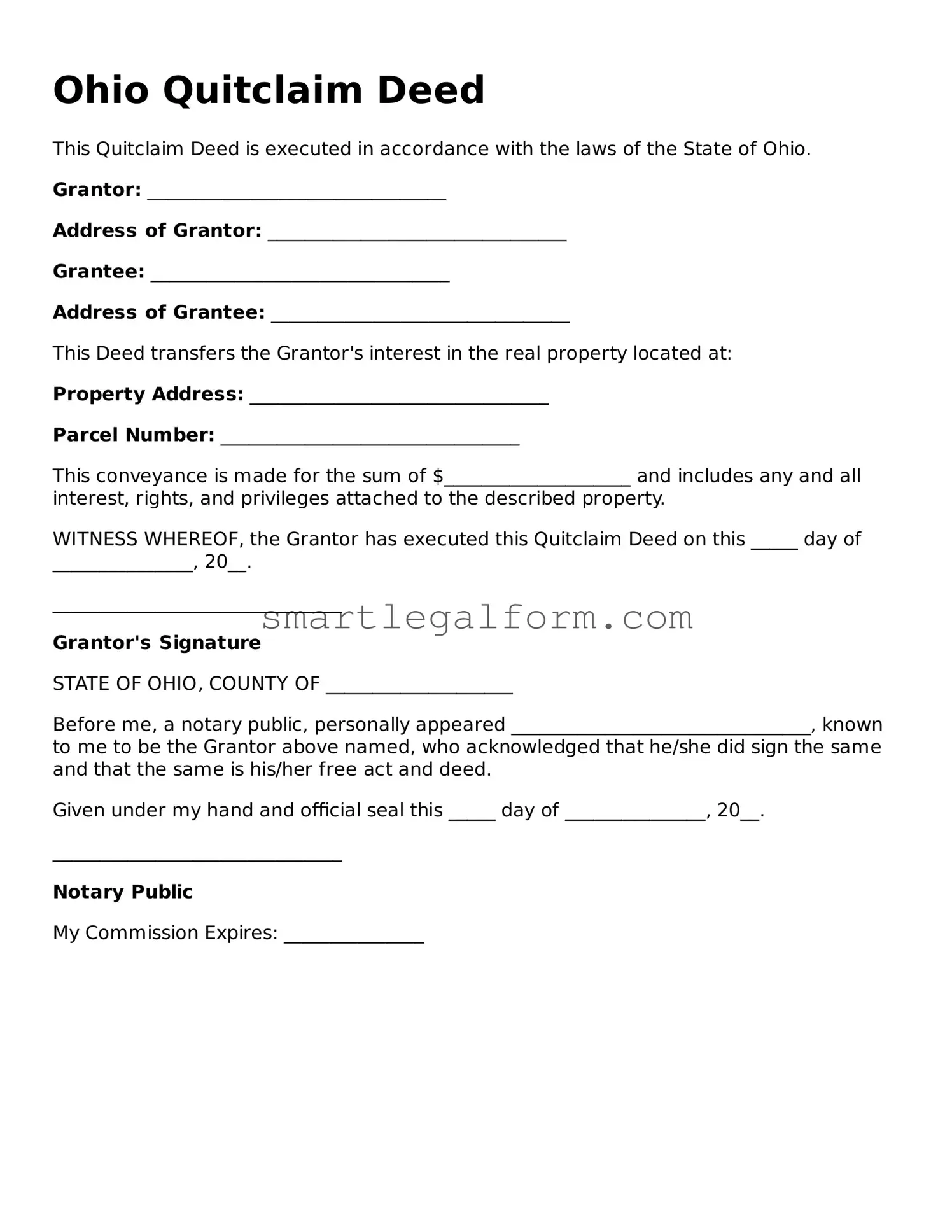Ohio Quitclaim Deed
This Quitclaim Deed is executed in accordance with the laws of the State of Ohio.
Grantor: ________________________________
Address of Grantor: ________________________________
Grantee: ________________________________
Address of Grantee: ________________________________
This Deed transfers the Grantor's interest in the real property located at:
Property Address: ________________________________
Parcel Number: ________________________________
This conveyance is made for the sum of $____________________ and includes any and all interest, rights, and privileges attached to the described property.
WITNESS WHEREOF, the Grantor has executed this Quitclaim Deed on this _____ day of _______________, 20__.
_______________________________
Grantor's Signature
STATE OF OHIO, COUNTY OF ____________________
Before me, a notary public, personally appeared ________________________________, known to me to be the Grantor above named, who acknowledged that he/she did sign the same and that the same is his/her free act and deed.
Given under my hand and official seal this _____ day of _______________, 20__.
_______________________________
Notary Public
My Commission Expires: _______________
